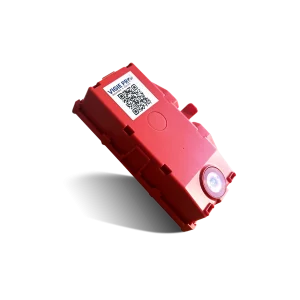Altyor’s refurbishing loop
Reconditioning to give a second life to your connected product
The reconditioning loop is one of the solutions that Altyor offers as part of a circular economy strategy. The design of your loop is tailored to your needs.


What is the purpose of a reconditioning loop?
This sector consists of reconditioning or refurbishing end-of-life products. These products may be damaged, or simply no longer used by customers following a new version of the product, for example.
In this loop, Altyor will recover these products and give them a new life. Depending on the customer’s business model, the products can then be resold via reconditioned sales channels, or donated to charities.
What are the different types of reconditioning?
Repackaging can take several forms, depending on the type of product non-conformity. If the product is working, this may involve simple cleaning, or changing parts that look good. If the product is no longer functional, the defective components will have to be replaced.
In all three cases, Altyor’s mechanical and electronic RD centre has the industrial resources to dismantle, reassemble and repair electronic boards. Our expertise is comprehensive and integrated, enabling us to give products several lives.

What are the steps involved in reconditioning?
01
Receiving products
The first step is to receive the products and identify the types of failure. Products are scanned via their Serial Number (SN) for registration. They are then tested by our quality department for defect analysis. Depending on the defect, products are then sent to the dedicated Refusrbishing area.
02
Repairing
The second step is repair. Resetting an SD card, replacing faulty components, rewiring soldering wires… Our specialized soldering and repair technicians carry out this refurbishment.
03
Final inspection
The third stage is the final inspection. Once the repair has been completed, the products are taken to the final inspection station, where the quality department confirms that the repaired product is in good working order.
04
Packaging
Finally, in the fourth stage, we package the product, affixing a traceability barcode for delivery to the customer’s premises.
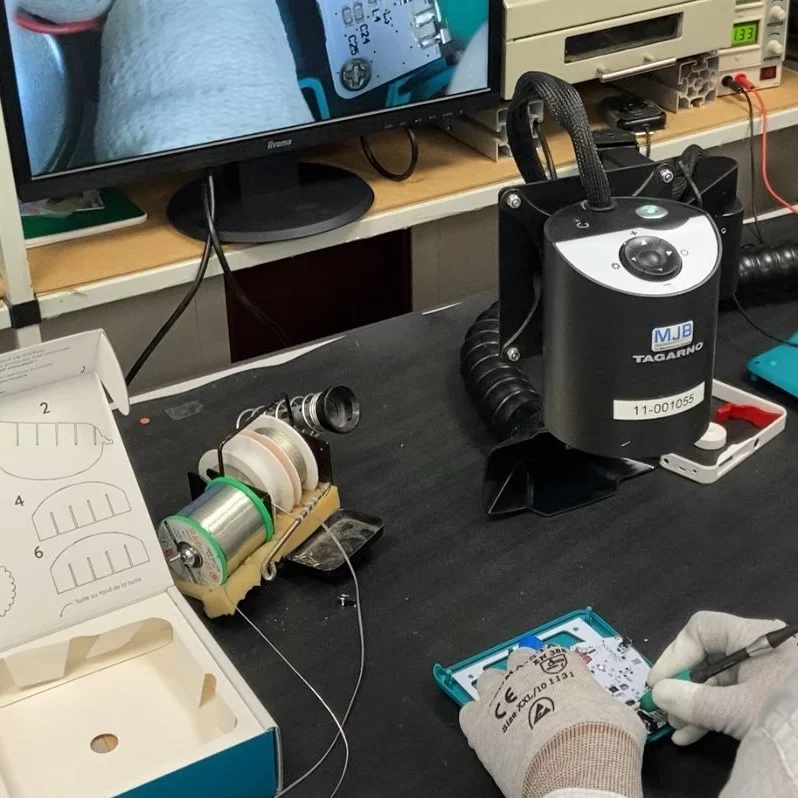
[Cas client] Setting up a repackaging loop for Bookinou

Start-up Pimely has created the Bookinou audio reader for young children. Altyor is their industrial partner, supporting them in the design and production of their product. Pimely has created a circular economy scheme aimed at recovering Bookinou no longer used or abused by its young users.
To achieve this, a reconditioning loop has been chosen, and each product recovered is then refurbished to give it a second life.
At the end of the process, they are donated to associations such as Hôpital Necker-Enfants malades in Paris.
Watch the Bookinou reconditioning loop video
Three models for product recovery
A model based on trust
The end-user buys his product. He can return it at the end of its life, and will be rewarded.
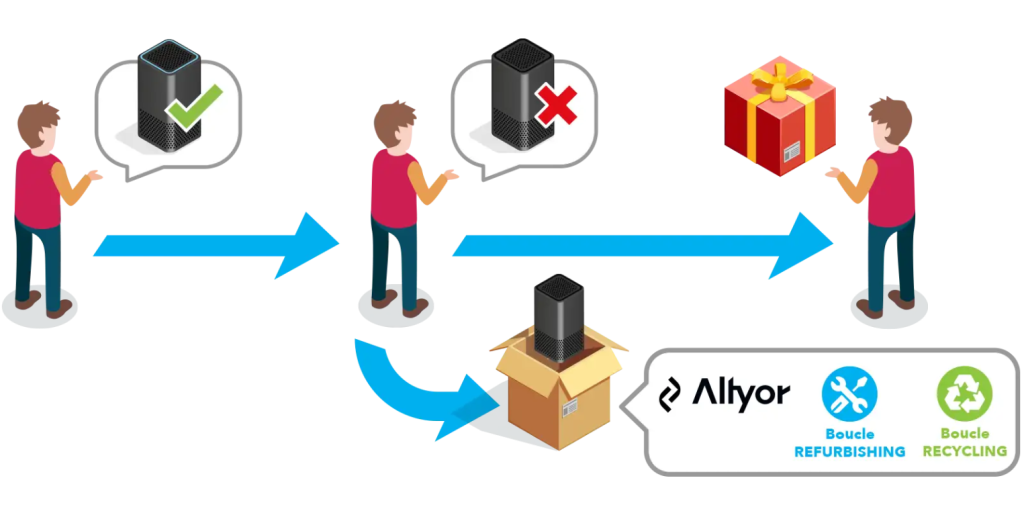
When should you choose this model?
What’s in it for the marketer?
What are the benefits for the end user?
A subscription-based model
The end-user may or may not buy the product. He pays a monthly subscription fee. The user must return the product at the end of its life, and if he doesn’t, there are penalties.
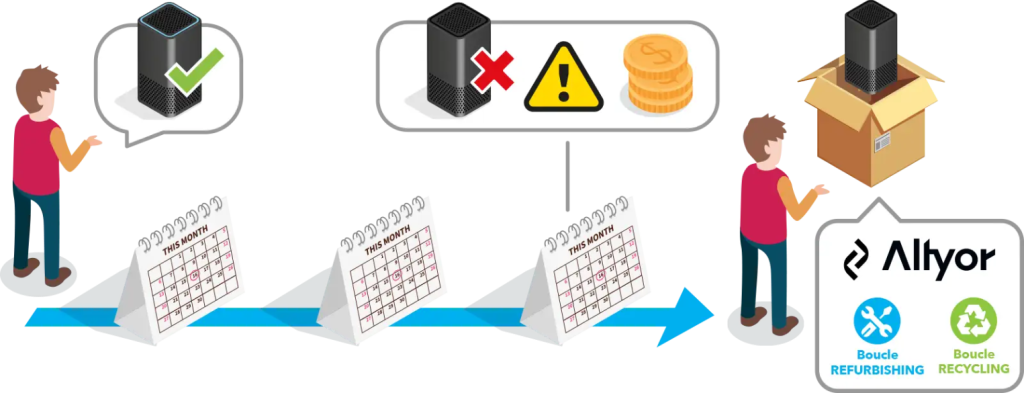
When should you choose this model?
What’s in it for the marketer?
What are the benefits for the end user?
A model based on ownership
The user doesn’t buy the product, and he doesn’t own it. That’s the manufacturer.
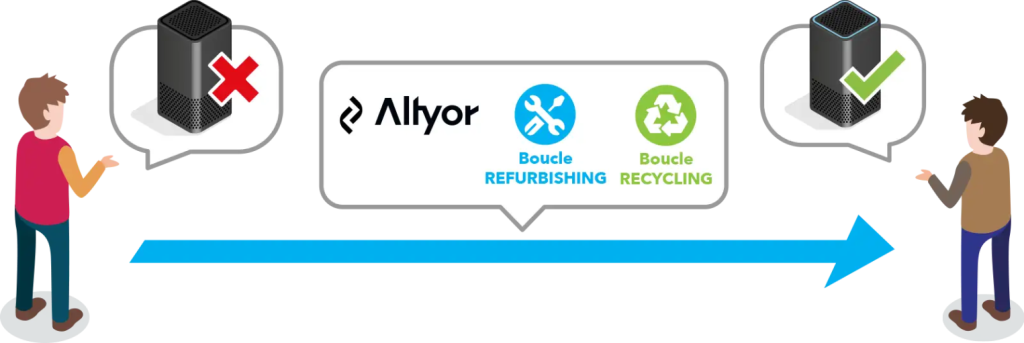
When should you choose this model?
When your product is always accessible to you and does not belong to the user (meter, etc.).
What’s in it for the marketer?
What are the benefits for the operator?
What’s in it for the user?
Get a quote tailored to your project!

How do you perform a life cycle assessment (LCA)?
We can help you calculate and analyze your product’s ecological footprint using LCA.
Life cycle assessment is the starting point for understanding your product’s impact on the environment. To help you understand the ins and outs of LCA (Life Cycle Assessment), we’ve put together 14 answers that will shed some light on the subject.

